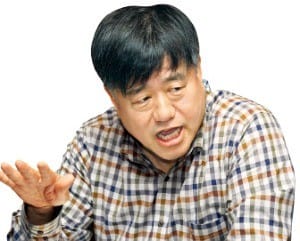Department News
[The Korea Economic Daily] Afraid of China’s Pursuit? Shenzhen Has Already Surpassed Korea
Afraid of China’s Pursuit? Shenzhen Has Already Surpassed Korea<?xml:namespace prefix = "o" ns = "urn:schemas-microsoft-com:office:office" />
Innovating China, Sprinting Shenzhen
Huawei As a Strong Player in Fourth Industrial Revolution
More Than Half of Shenzhen Companies’ Staff in R&D
Venture Incubators Full of Young Entrepreneurs: ‘Power of Innovation Ecosystem’ Attracting the World

Shenzhen=Professor Heui Jae Pahk,
Dept. of Mechanical and Aerospace Engineering, Seoul National University
Recently, the concern that ‘Chinese companies are catching up with Korean companies at an alarming speed’ has surfaced in Korean society. This idea is half true and half false; China has already surpassed Korea in a variety of fields. Visiting Shenzhen companies from January 14 to 17 as a member of Korea Economic Daily’s Special Press Team, the level of their technologies was more than enough to shock us all. Huawei, founded in 1988, is a strong player in creating global markets in areas of Fourth Industrial Revolution. This is due to their bold decision of investing more than 10% of their annual revenues in research and development (R&D), increasing their technological prowess.
DJI is a typical innovation technology company that was founded in Shenzhen in 2006, dominating the global market for commercial drones with the largest market share. Having overcome its initial mistakes by pioneering a new market of camera drones, it is now a global enterprise, employing over 3,000 R&D personnel—and this is just at its headquarters in Shenzhen.
Makeblock is world’s largest company in providing educational tools for STEM (science, technology, engineering, and mathematics) education. Among the 400 employees at its headquarters, about 250 of them work in R&D.
The common factor of these companies is that they invest a large amount of money in R&D, and that about 50% of employees at their headquarters all work in R&D. The combination of young, creative R&D personnel and world’s most competent parts supply chain creates a powerful synergy. Their visible success in a number of global markets is an obvious result.
So how did Shenzhen become a major birthplace of innovative technologies? The secret is their well-established ecosystem of innovative R&D and startups. From the very beginning of their economic development, the Municipal Government of Shenzhen built a university town in order to increase research competence and establish human resources infrastructure. Shenzhen is home to local campuses of prominent Chinese universities such as Beijing University, Tsinghua University, and Harbin Institute of Technology.
The Municipal Government has also been a stable force in executing the ‘master plan’ that connects education, R&D, university-business cooperation, technology-based startups, and marketing. This kind of education and R&D infrastructure serves as the keystone of Shenzhen’s innovation ecosystem.
Huawei employs more than 150 graduates per year from the Shenzhen Campus of Harbin Institute of Technology. Thanks to an active university-business research program between universities and Shenzhen companies, the scale of R&D projects won by the Institute yearly is much greater that those of top Korean universities.
Leaguer, a venture capital firm mutually financed by Tsinghua University and the Municipal Government of Shenzhen, has invested in hundreds of enterprises, many of which have succeeded in expanding overseas. It runs its own accelerator (organization supporting starups) in addition to a global accelerator program for foreign startups.
There is a fundamental difference compared to Korean universities’ technology holdings companies with ineffective programs that only scratch the surface of technology-based startups. Looking at venture incubator offices full of young entrepreneurs and numerous startup buildings along the streets of Shenzhenwan Chuangye Plaza, we could feel that Shenzhen’s innovation ecosystem was truly alive and kicking.
■ The Korea Economic Daily Special Press Team
◆Startups=Bongjin Kim, CEO of Woowa Brothers; Hyo-jin Lee, CEO of 8Percent; Jungwook Lim, Managing Director of Startup Alliance Korea; Taeeon Koo, Chief Attorney of Tek & Law; Jin Ryu, Director of PR at Woowa Brothers
◆Seoul National University=Prof. Heui Jae Pahk and Prof. Suk Won Cha, Dept of Mechanical and Aerospace Engineering; Prof. Kwangkeun Yi, Dept of Computer Science and Engineering
◆Korea Economic Daily=Byeong-seok Cha, Deputy Managing Editor; Jin-mo Jang, Head of Politics Team; Jun-dong Park, Head of Financial Team; Kyu-ho Jang, Head of Culture Team; Dong-kyun Kang, Beijing Correspondent; Dong-yun Kim, Kyung-mok Noh, Seung-woo Lee, and Beom-joon Kim, Reporters
Link to article http://stock.hankyung.com/news/app/newsview.php?aid=2018012398681

